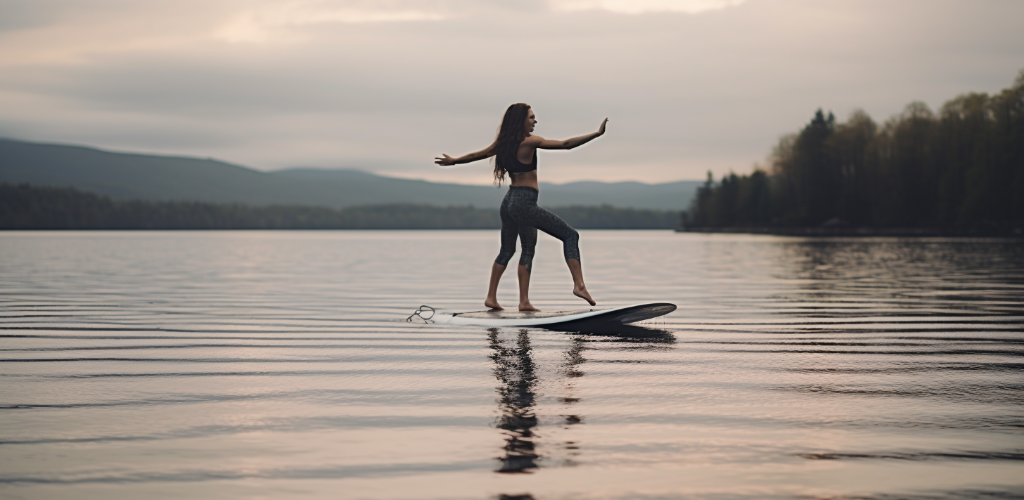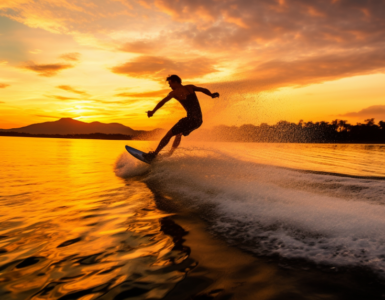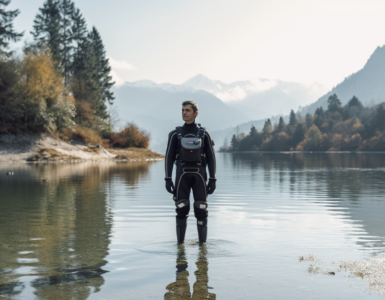Hey there, water sports enthusiasts! There’s something incredibly thrilling about wakeboarding, isn’t there? The feeling of gliding over water, the adrenaline rush, the unique blend of skill and fun – it’s all part of the package. One crucial aspect of wakeboarding that often proves challenging for beginners is getting up on the board. But don’t worry, it’s not as tough as it seems! This post is here to guide you through the process, ensuring you can fully immerse in the joy of wakeboarding.
So, are you ready to dive in? Let’s get started!
Wakeboarding: A Quick Overview
Have you ever wondered about the origins of wakeboarding? This exhilarating water sport has its roots in the late 1980s, a fusion of water skiing, snowboarding, and surfing techniques. Today, it’s a highly popular sport, loved for its blend of thrill and skill. What makes it so exciting? Well, it’s probably the perfect mix of speed, balance, and, of course, the inevitable splash!
And let’s not forget the tricks and stunts that advanced wakeboarders perform, adding an extra layer of awe to this already amazing sport.
The Role of Equipment in Wakeboarding
Just like any other sport, having the right equipment in wakeboarding is absolutely essential. Can you imagine trying to play soccer without a proper ball or going skiing without ski poles? It’s the same with wakeboarding. The right type of wakeboard can make a huge difference in your performance.
Wakeboards come in different shapes and sizes, each designed for a specific use. For instance, some are perfect for beginners, while others are suited for those adrenaline-pumping stunts. Understanding your wakeboard and knowing how to choose the right one is a crucial part of your wakeboarding journey. So, are you ready to take the plunge?
Pre-boarding Preparation
Ever thought about what it takes to get up on a wakeboard successfully? Well, it’s not just about stepping onto the board and hoping for the best. It requires a good deal of mental and physical preparation. Whether you’re a beginner or an expert, the right mindset and physical readiness are vital to ensure a smooth ride. Remember, wakeboarding is not just a sport; it’s an art that requires patience, focus, and resilience.
Understanding Your Wakeboard
Before we jump into the water, let’s get to know our wakeboard a bit better, shall we? The wakeboard is your companion in this thrilling journey. It consists of several parts, each serving a unique purpose. The deck is the part you stand on, the rocker refers to the curvature of the board that affects your speed and maneuverability, and the fins provide the much-needed grip in the water. Understanding these parts can significantly improve your wakeboarding skills.
The Right Gear
In addition to a good wakeboard, having the right gear is crucial. But what does the ‘right gear’ consist of? Well, it includes a sturdy handle, a strong rope, and comfortable bindings. The handle is your connection to the boat, the rope needs to be strong enough to withstand the pull, and the bindings ensure your feet stay securely on the board. So, don’t underestimate the importance of your gear. It can make or break your wakeboarding experience.
Positioning Yourself Correctly on the Board
Now, let’s talk about positioning. How you position yourself on the board is a game-changer. Your feet should be shoulder-width apart with one foot slightly forward. Your knees should be slightly bent, and your weight should be centered. Remember, your body should be relaxed, not stiff. This position will help you maintain balance and control as you get up on the wakeboard. So, are you ready to give it a shot?
The Role of the Boat and Driver
Did you know that the boat’s speed and the driver’s skill can greatly affect your wakeboarding experience? Yes, it’s true! The boat’s speed needs to be just right – not too fast, not too slow. And the driver needs to be skilled enough to maintain that speed. Sounds tricky, doesn’t it? But don’t worry, with practice, it gets easier.
| Level | Suitable Boat Speed |
|---|---|
| Beginners | 14-18 mph |
| Intermediates | 18-22 mph |
| Experts | 22-26 mph |
The Process of Getting up on a Wakeboard
So, you’re ready to tackle wakeboarding head-on? That’s fantastic! But, where do you start? The process of getting up on a wakeboard can seem quite daunting at first. However, with a little patience and practice, you’ll be up and riding in no time. Let’s break down the steps:
- Step 1: Start in the water with your board perpendicular to the rope. Your knees should be bent, and the board should be between you and the boat.
- Step 2: As the boat starts moving, let the pull of the boat bring you and the board up to the surface. Do not try to stand up immediately.
- Step 3: Once your board is on the surface of the water, gradually stand up by extending your legs. Remember to keep your weight balanced between both feet.
- Step 4: Maintain a steady stance, keep your arms straight, and allow the boat to guide your movement.
- Step 5: Congratulations! You’re up on your wakeboard. Now, you can start to explore and enjoy the ride.
Common Mistakes and How to Avoid Them
Learning to wakeboard is a process, and it’s normal to encounter some bumps along the way. However, being aware of common mistakes can help you avoid them and accelerate your progress. Let’s look at a few:
Pushing Up Too Soon: This is a common mistake for beginners. It’s essential to let the boat do the work and pull you up. If you try to stand up too soon, you’ll likely fall.
Leaning Back: Many beginners lean back when they’re trying to get up on the wakeboard. Instead, you should lean forward slightly, keeping your weight centered over the board.
Tips on Mastering the Wakeboard Stance
Now that you’re up on your wakeboard, what’s next? It’s time to master your stance. Having a good stance is key to maintaining balance and control on your wakeboard.
First, ensure your feet are positioned correctly on the board – they should be shoulder-width apart. Your knees should be slightly bent, and your weight should be evenly distributed between your front and back foot. Remember, your body should be aligned with the direction of the board, not the boat.
It may take some tweaks and adjustments to find a stance that feels comfortable and natural for you. Don’t be afraid to experiment!
Progressing from Beginner to Intermediate
Wakeboarding is a journey, and every ride brings you one step closer to becoming an intermediate rider. But how do you make that transition?
Once you’ve mastered getting up on the board and maintaining your balance, it’s time to start working on your technique. This includes learning how to carve, or turn, on the wakeboard, and even starting to attempt some basic jumps and tricks.
Remember, progress takes time. Don’t rush yourself or get discouraged if things don’t come easily at first. Keep practicing, stay positive, and most importantly, have fun!
Practice Makes Perfect
Ever heard the phrase “practice makes perfect”? Well, it’s never been more true than when it comes to wakeboarding. Remember, no one was born a wakeboarding pro. It takes time, patience, and a lot of practice to master the art of getting up on a wakeboard and maintaining balance. So, don’t get discouraged if you don’t get it right the first time, or even the tenth time. Keep practicing, and remember to have fun while you’re at it!
Safety First
While wakeboarding is all about fun and thrill, it’s crucial not to forget about safety. Did you know that a significant number of wakeboarding accidents can be prevented with the proper use of safety gear? That’s right! So, before you hit the water, make sure you’re well-equipped with the necessary safety equipment.
- Life Jacket
- Helmet
- Wakeboarding Gloves
- Protective Eyewear
- Impact Vest
- Wakeboarding Boots
Remember, it’s always safety first when it comes to any water sports, including wakeboarding.
Conclusion
And there you have it! A comprehensive guide on how to get up on a wakeboard. From understanding your equipment to the importance of proper positioning, we’ve covered it all. And don’t forget about the role of the boat driver and the importance of maintaining the right boat speed. It might seem overwhelming at first, but with practice and patience, you’ll be up and riding in no time!
So, are you ready to hit the water and start wakeboarding? Go ahead, put these tips into practice and experience the thrill of this exciting water sport. And don’t forget to share your wakeboarding experiences with us. Got any questions? Feel free to ask. We’re here to help you on your wakeboarding journey.




